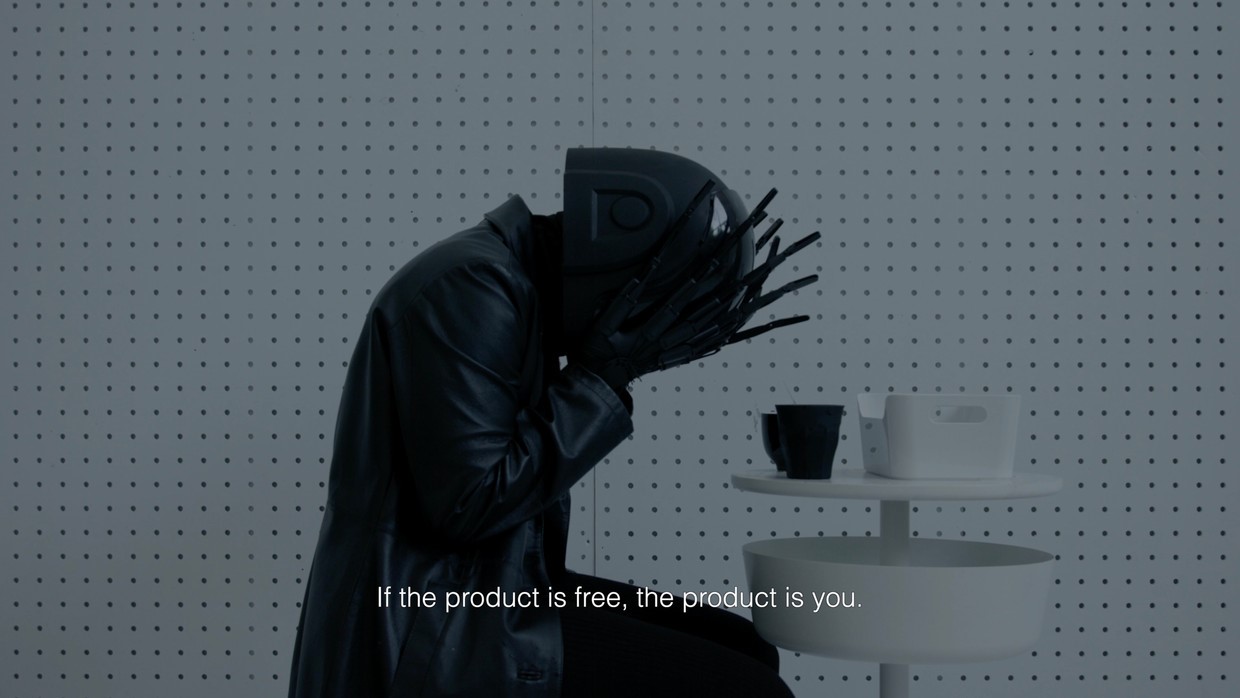“TO CONFIRM THAT YOU ARE NOT A ROBOT, PLACE A CHECK IN THE BOX NEXT TO “I’M NOT A ROBOT”, SILVIA MARTES (NL)

Title of the artwork: To Confirm That You Are Not a Robot, Place a Check in the Box Next to “I’m Not a Robot”
Author: Silvia Martes
Date: 2021
ARTWORK ABSTRACT IN WORDS OF THE ARTIST
“My films sketch a world in which humanity seems to have destroyed itself. To Confirm That You Are Not a Robot, Place a Check in the Box Next to “I’m Not a Robot” is set in the year 2121. Humanity is nearly extinct, a woman named Silvia is one of the last living entities on Earth. She was given eternal life through a vaccine.”
“It’s not my goal to tell you what to do or think,” Martes says of the political layer in his films. “But I do want to make you feel something.”
GET INSPIRED
After passing through the futuristic corridor specially designed to lead to the projection room, the visitor sits in an enclosed windowless room and watches a video creation that takes up the entire wall. It is a film that tells the story of three protagonists in 2121, one hundred years from now. It paints a picture of a possible future resulting from our behavior in the areas of technology and climate. The narrative follows the three characters as they move through the remains of what was once Mother Earth. They are “the last ones standing.” One is a human being with an outward resemblance to the artist herself. Another is an audible but invisible being. The third is a non-binary robot who suffers enormous guilt over the destructive role of technology. The three characters consult an oracle to get an idea of what lies ahead for humanity; however, instead of being a crystal ball that predicts the future, this oracle functions as a history book.
This ‘reverse oracle’ lists where things went wrong with humanity: floods, droughts, famines, Black Lives Matter, climate change, privacy. This work is an example of how the major issues of our time can be made visible, many of them related to science and technology.
For example, the non-binary Darth Vader-like robot, who in the past, persuaded people to sell their personal information and now has pangs of conscience. “If the product is free, then you are the product,” shouts the robot with its head between its bionic hands.
This piece can be inspiring of how different fields of knowledge such as biotechnology, cinema, fine arts, environmental sciences or psychology are interwoven in an artistic project.
WHAT DOES THIS WORK TRANSMIT TO US?
What materials / media are used in the work and why?
This work is a video creation designed to be exhibited in a futuristic installation. It consists of a corridor that the visitor has to cross to reach the projection room, dark and with some seats. The materials chosen for the installation are smooth, polished and with a minimalist aesthetic.
What is the significance of the elements of the work?
Tuesday makes her film like a painter builds a painting. She has different elements: text, decor, editing and sound, all are equally important to her. It’s not that she always starts with a story and then creates a set to fit it, it’s often the other way around: the story emerges as she builds a set.
She uses four characteristic elements:
-Striking sets:
Sets and their production play an important role in Tuesday’s films and creative process. She describes her process as erratic: ideas often emerge during construction.
Sets don’t have to be realistic, says Martes. You might see that you’re looking at a scenario: The challenge is to create a world that is clearly fictional and then fully immerse yourself in the story. Often, you only need a few recognizable elements for viewers to believe in an illusion.
-Alienating voiceovers:
The effect of those voiceovers has a practical explanation: they give the performer more freedom if she adds the text as a voiceover afterwards. To Confirm That You Are Not A Robot… contains a conversation from a podcast about ghostly apparitions. Those additional layers of sound show that the stories always refer to other stories.
-Reduced palette:
Another striking feature of the Tuesday films is their use of color. Almost everything in the film is black, white or gray. It fits the clinical, sterile world populated by aliens, a depressed robot and Silvia, the last human being.
-Acting talent:
In Tuesday movies all aspects are equally important: the sets, the text, the editing. The actors are also important, but they don’t carry the film completely. She doesn’t always work with professional actors, and mainly looks to see if she thinks someone looks interesting. Martes herself plays Silvia, the immortal woman.
About the artist
Silvia Martes produces experimental films, which appeal to the science fiction genre. Most of the time, the narratives of her short films have their origin in an autobiographical experience or are inspired by collective human behavior, its relation to technology, the environment, etc. They are experimental films full of bleak visions of the future and social criticism.
Author of the analysis: Amalia Ortega Rodas
